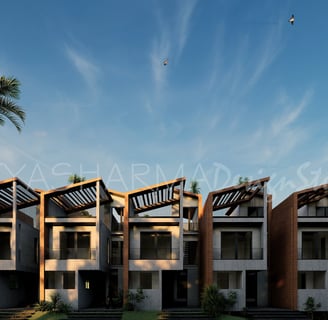Biophilic Architectural Design : Designing with Nature and Implementing Sustainable Architectural Design
Ar. Nitya Sharma
3/2/20241 min read


Biophilic architectural design is a holistic approach that incorporates nature into the design process, creating sustainable and aesthetically pleasing spaces. It goes beyond simply adding a few plants or pictures of nature; it aims to create an immersive experience that connects people with the natural world.
At it’s core, biophilic architectural design recognizes the innate human connection to nature and the positive impact it has on our well-being. It draws inspiration from nature's patterns, colors, and textures, and incorporates them into the built environment. By doing so, it creates a sense of harmony and balance, promoting a healthier and more productive living experience for humans.
One of very vital principles of biophilic architectural design is to maximize exposure to natural light. Natural light has a profound effect on our circadian rhythm, helping regulate our sleep patterns and overall mood. Incorporating large windows, skylights, or light wells into a space allows for ample natural light to enter, reducing the need for artificial lighting and creating a more inviting atmosphere. It also emphasizes the importance of incorporating natural views and vistas. Whether it's through strategically placed windows or outdoor spaces, providing views of nature can have a calming effect, reducing stress levels and promoting mental well-being. Access to outdoor spaces, such as gardens or courtyards, further enhances the connection to nature, allowing for moments of respite and contemplation.
It's an architecture that encourages the inclusion of natural patterns and fractals. These repetitive patterns, found abundantly in nature, have been shown to have a soothing effect on the human brain. By incorporating them into the design, whether through artwork, textiles, or architectural elements, it creates a sense of visual interest and tranquility.
Biophilic architectural design is not only beneficial for individuals but also for the environment. By creating sustainable design forms that mimic nature's systems, it reduces the ecological footprint of a space. For example, incorporating rainwater harvesting systems, green infrastructure, and energy-efficient technologies can contribute to a more sustainable and resilient built environment.
Ar. Nitya Sharma
@nityasharmadesignstudio
@nsdsarchitects
@indianarchitect
